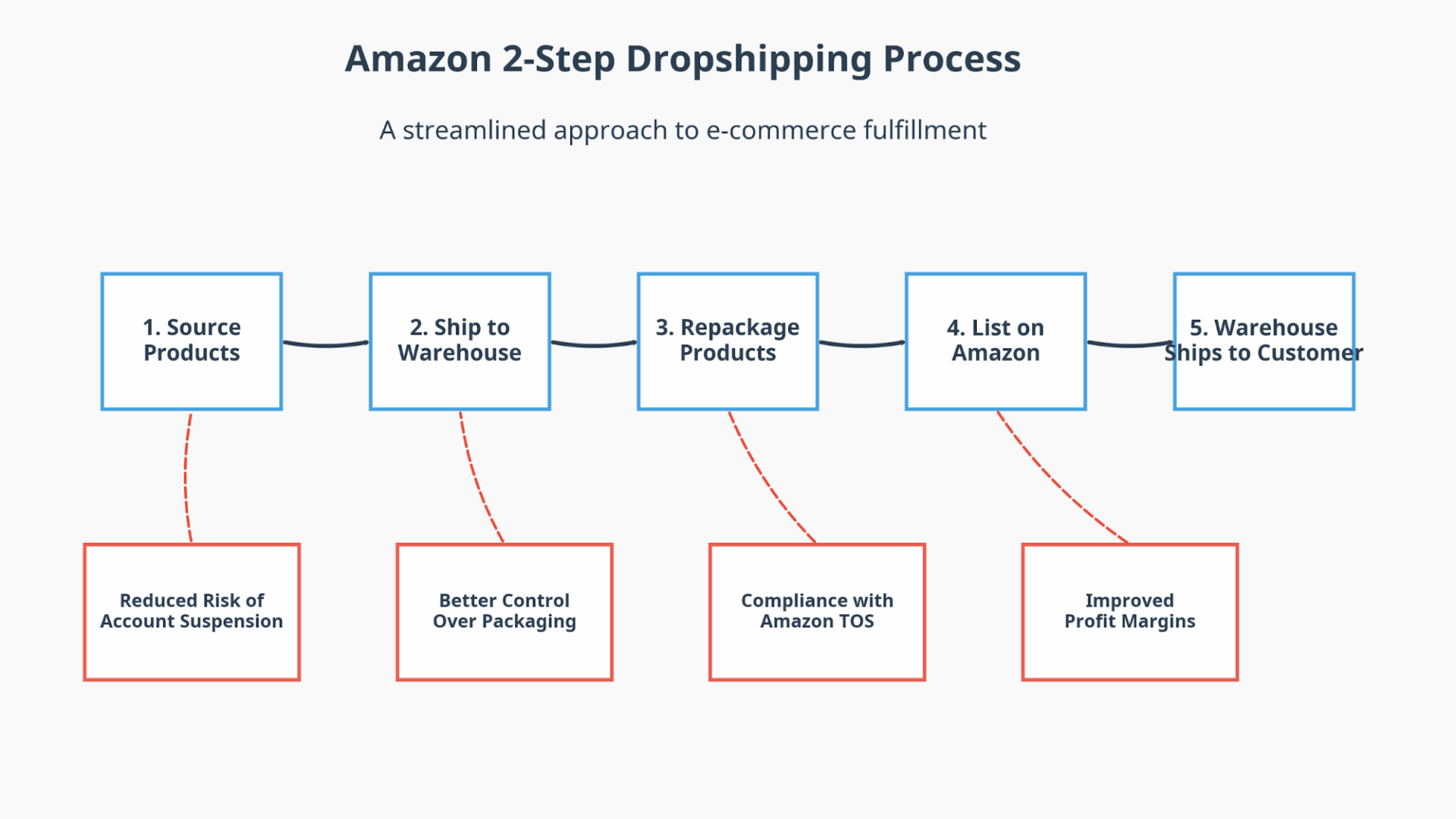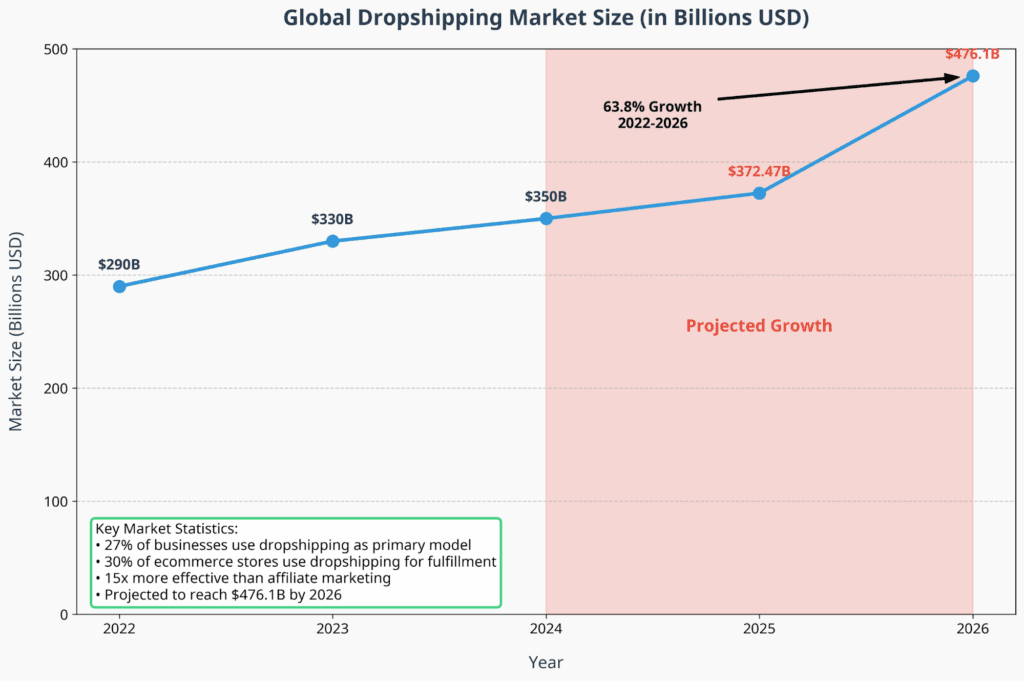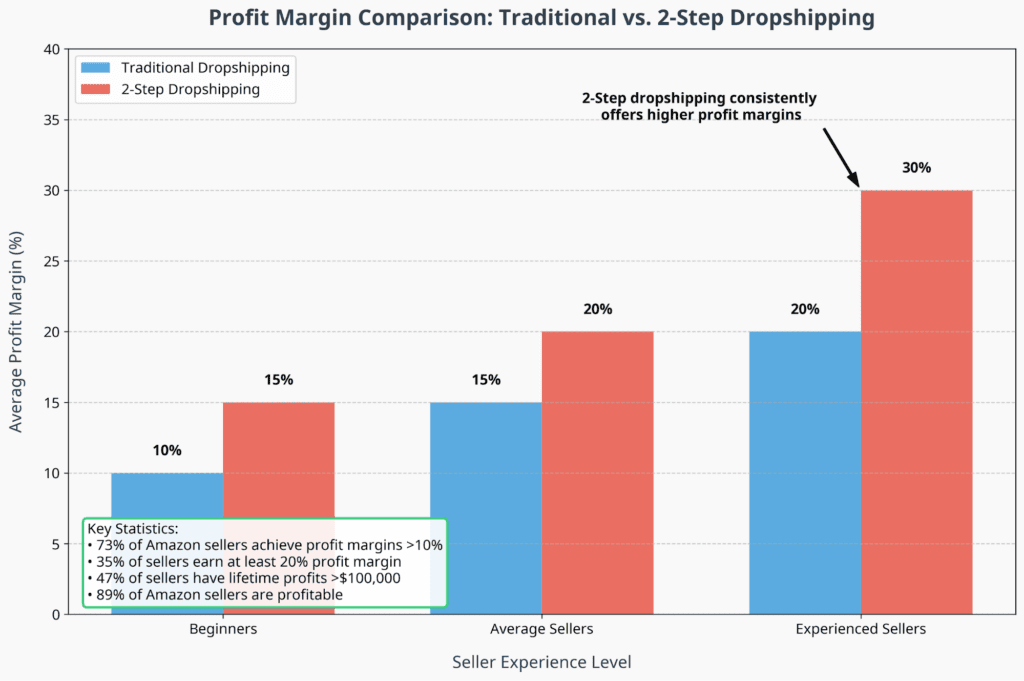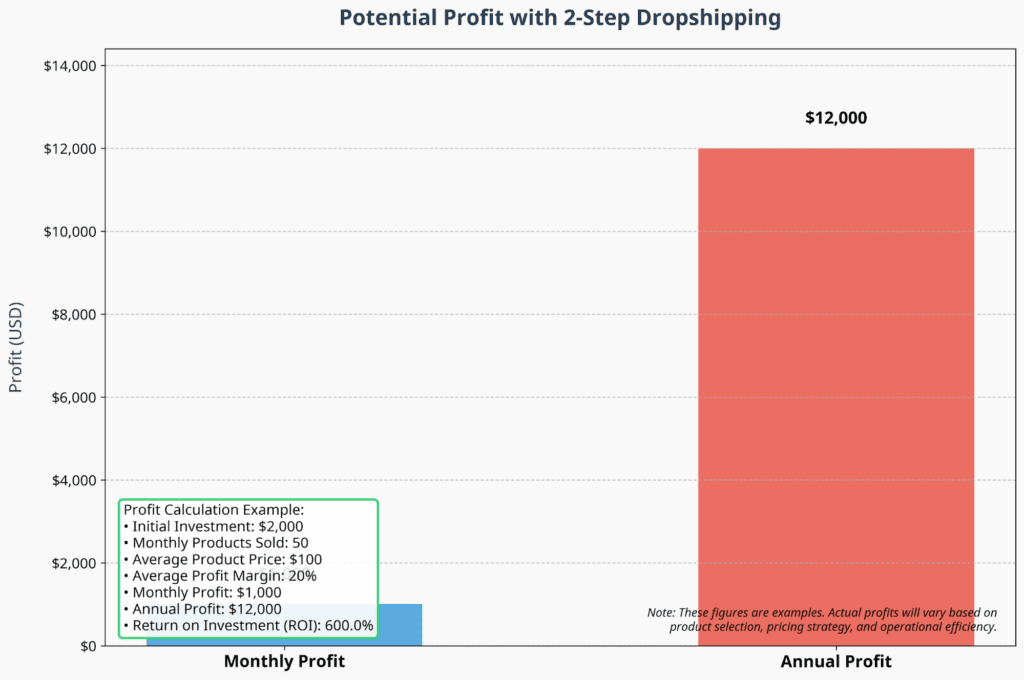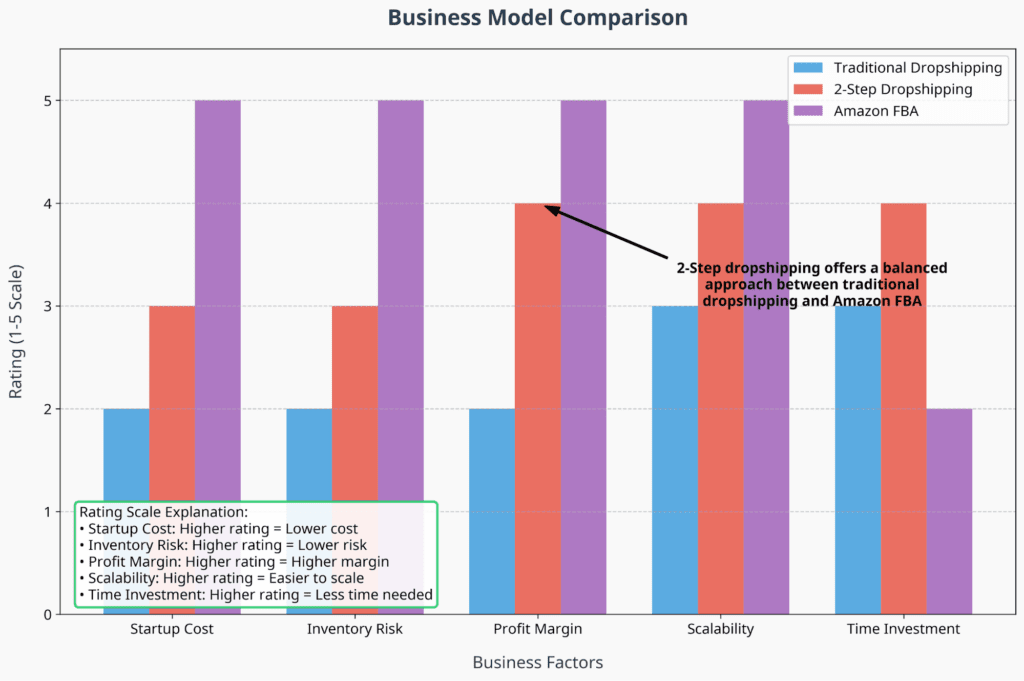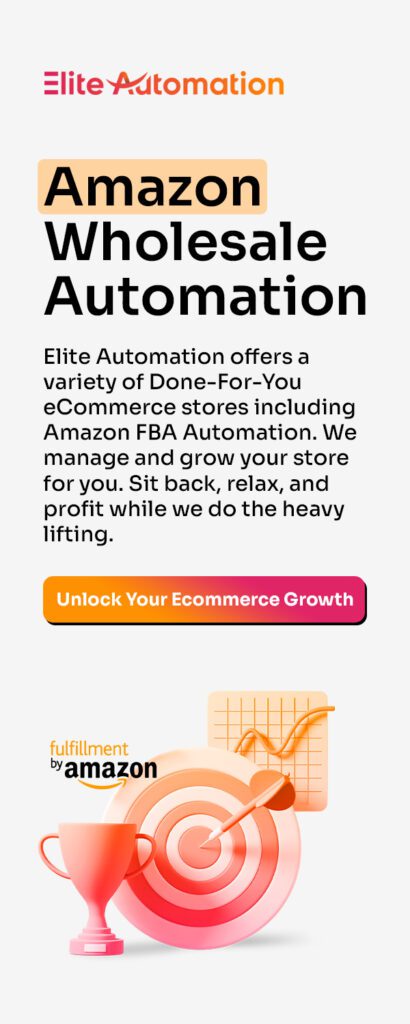Summary
Welcome to the ultimate guide on Amazon 2-Step Dropshipping, a powerful business model that combines the simplicity of traditional dropshipping with enhanced profitability and reduced risk of account suspension.
Amazon 2-Step Dropshipping
The Ultimate Guide to Higher Profits with Lower Risk
Introduction
Welcome to the ultimate guide on Amazon 2-Step Dropshipping, a powerful business model that combines the simplicity of traditional dropshipping with enhanced profitability and reduced risk of account suspension.
This presentation will provide you with comprehensive information about the 2-step dropshipping process, its advantages, profit potential, and implementation strategies.
What is 2-Step Dropshipping?
2-Step Dropshipping is a hybrid approach that merges traditional dropshipping with an intermediary warehouse step. Unlike traditional dropshipping where products are shipped directly from the supplier to the customer, 2-step dropshipping introduces an additional step in the fulfillment process.
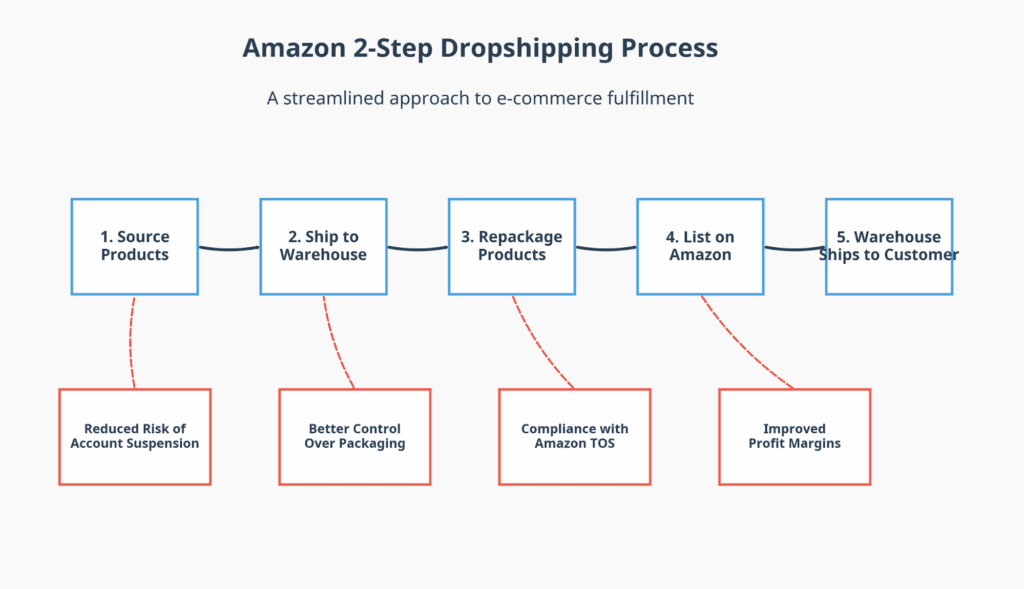
In this model, sellers source products from various retailers, usually in small batches of 5-10 items. These products are sent to intermediary warehouses where they are removed from their original branded packaging and any invoices are removed. When a sale is made on Amazon, the warehouse ships the item via USPS directly to the end customer in unbranded packaging.
The 2-Step Dropshipping Process
- Sourcing Products: Sellers source products from various retailers, usually in small batches of 5-10 items.
- Shipping to Intermediary: These products are sent to intermediary warehouses.
- Repackaging: At the warehouse, products are removed from their original branded packaging and any invoices are removed.
- Fulfillment: When a sale is made on Amazon, the warehouse ships the item via USPS directly to the end customer in unbranded packaging.
- Tracking & Management: The entire process is tracked through specialized software platforms.
Market Size and Growth Potential
The dropshipping market is experiencing significant growth, with projections indicating substantial expansion in the coming years.
Key statistics:
- The dropshipping market is anticipated to reach $372.47 billion by 2025
- The global dropshipping market is looking to hit $476.1 billion in 2026
- More than 30% of ecommerce stores use dropshipping for order fulfillment
- Approximately 27% of businesses have adopted dropshipping as their primary business model
Profit Potential Analysis
One of the most compelling aspects of 2-step dropshipping is its profit potential. Let’s examine the profit margins compared to traditional dropshipping.
The data shows that:
- Sellers can enjoy profit margins averaging around 20% with 2-step dropshipping
- 73% of all Amazon sellers achieve profit margins exceeding 10%
- 35% of Amazon sellers earn at least a 20% profit margin
- The profit margin for Amazon dropshipping ranges from 10% for beginners to 30% for experienced sellers
Profit Calculator
To better understand the potential earnings, let’s look at a practical example of what you might expect from a 2-step dropshipping business.
This example assumes:
- Initial investment: $2,000
- Monthly products sold: 50
- Average product price: $100
- Average profit margin: 20%
Resulting in:
- Monthly profit: $1,000
- Annual profit: $12,000
- Return on Investment (ROI): 600%
Comparison with Other Business Models
When deciding on an e-commerce business model, it’s important to understand how 2-step dropshipping compares to alternatives like traditional dropshipping and Amazon FBA.
2-Step Dropshipping vs. Traditional Dropshipping
Advantages of 2-Step Dropshipping:
- Reduced risk of account suspension
- Control over packaging and customer experience
- Compliance with Amazon’s Terms of Service
- Legitimate tracking numbers from warehouses
- Professional, neutral packaging without retailer branding
Challenges of Traditional Dropshipping:
- Higher risk of Amazon account suspension
- No control over packaging
- Potential policy violations
- Inconsistent customer experience
2-Step Dropshipping vs. Amazon FBA
Advantages of 2-Step Dropshipping over FBA:
- Lower startup costs and reduced capital requirements
- No inventory management needed
- Flexible location – can operate from anywhere
- Minimal financial risk
- Accessible for newcomers to e-commerce
Advantages of FBA:
- Higher potential profit margins (50-80%)
- Amazon handles customer service
- Prime eligibility
- Better visibility in search results
Traditional Dropshipping2-Step DropshippingAmazon FBATotal InvestmentMonthly Investment Comparison
Implementation Guide
Setting Up Your Amazon 2-Step Dropshipping Business
- Create an Amazon Seller Account
- Choose between Individual (
- 0.99persale)orProfessional(
- 0.99persale)orProfessional(39.99/month)
- Complete account verification
- Find Profitable Products
- Research products with good margins (aim for 20%+)
- Consider product weight, size, and fragility
- Analyze competition and demand
- Connect with Intermediary Warehouses
- Research reputable 2-step dropshipping service providers
- Compare pricing and services
- Establish relationships with warehouses
- Set Up Inventory Management
- Implement software to track inventory across platforms
- Monitor stock levels at warehouses
- Set up alerts for low stock
- Create Optimized Listings
- Write compelling product descriptions
- Use high-quality images
- Implement relevant keywords
- Set competitive pricing
- Scale Your Business
- Reinvest profits to expand product range
- Optimize based on performance data
- Consider expanding to multiple warehouses
Challenges and Solutions
While 2-step dropshipping offers many advantages, it’s important to be aware of potential challenges:
- Finding Products with Sufficient Margins
- Solution: Focus on niche products with less competition
- Solution: Consider higher-ticket items with better margins
- Managing Logistics
- Solution: Use specialized software for inventory and order tracking
- Solution: Build relationships with reliable warehouses
- Staying Updated with Marketplace Policies
- Solution: Subscribe to Amazon seller newsletters
- Solution: Join seller communities for policy updates
- Quality Control
- Solution: Test products before scaling
- Solution: Establish clear quality standards with warehouses
Tools and Resources
Several companies offer specialized services for 2-step dropshipping:
- Software Platforms
- Inventory management systems
- Price and stock monitoring tools
- Order automation software
- Warehouse Partnerships
- Prep centers specializing in Amazon sellers
- 3PL (Third-Party Logistics) providers
- Dedicated 2-step dropshipping services
- Educational Resources
- Amazon seller forums
- Specialized courses and webinars
- Industry blogs and newsletters
Conclusion
2-Step Dropshipping represents an innovative approach to Amazon selling that balances the low barrier to entry of traditional dropshipping with improved compliance and reduced risk of account suspension.
Key takeaways:
- 2-Step Dropshipping offers a balanced approach between traditional dropshipping and FBA
- Profit margins average around 20%, with experienced sellers achieving 30%
- The market is growing rapidly, projected to reach $476.1 billion by 2026
- Implementation requires careful product selection and warehouse partnerships
- The model reduces risk while maintaining relatively low capital requirements
Contact Information
For more information, for us to build you an Amazon store, or personalized coaching on implementing 2-step dropshipping strategies, please contact us.
